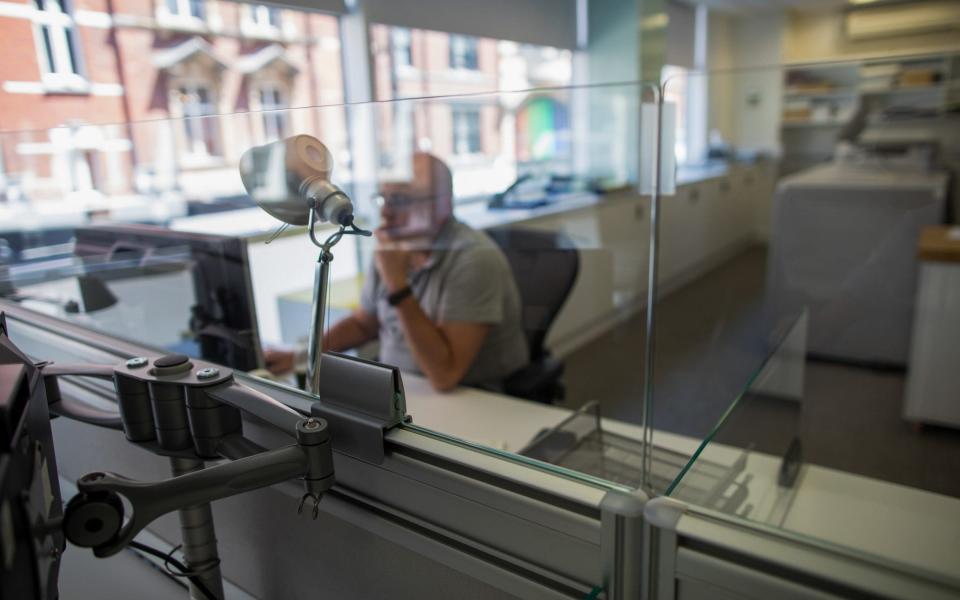Perspex screens ‘unlikely’ to block Covid, warns Sage

Perspex screens used as “Covid-safe” partitions in the workplace, beauty salons, barbers and shops may actually increase the spread of the virus if positioned incorrectly, Sage scientists have warned.
An undated document from a meeting of the Sage subgroup warned there was “very little data” on how effective screens were at stopping the spread of viral particles.
Evidence suggests there are three main ways in which coronavirus can spread, and they all centre around the ejection of infectious particles from an infected person’s mouth or nose after they talk, sneeze, or cough.
Large droplets which contain viral particles may be stopped in their tracks by barriers, if a person is within two metres of someone else, Sage experts have said. However, physical barriers are “unlikely to provide any direct benefit” over larger distances.
Smaller infectious particles called aerosols are also likely uninhibited by the screens because they are light enough to float on air currents and drift across an open space.
“Unless they are designed to work with the airflow, screens are unlikely to reduce exposure of virus in smaller aerosols as they can easily pass around a screen with the airflow in a short period of time,” the document revealed.
“There is some epidemiological and mechanistic evidence that suggests that screens could increase risks of aerosol transmission due to blocking/changing airflow patterns or creating zones of poor air circulation behind screens. This effect will depend on the local airflow patterns.”
The scientists said that whether the screens were effective depended on the layout of a space, ventilation, the size and design of the screen and the type of interactions in the area.
They added: “There are large numbers of screens that are unlikely to be effective due to their design or positioning.”
The experts said further research was needed to look at the effectiveness of screens and barriers in real-world settings.

 Yahoo Finance
Yahoo Finance 